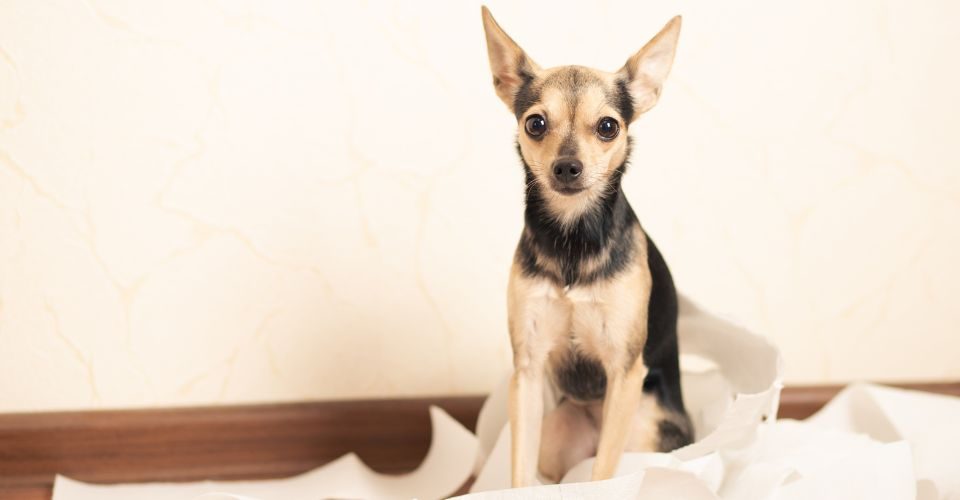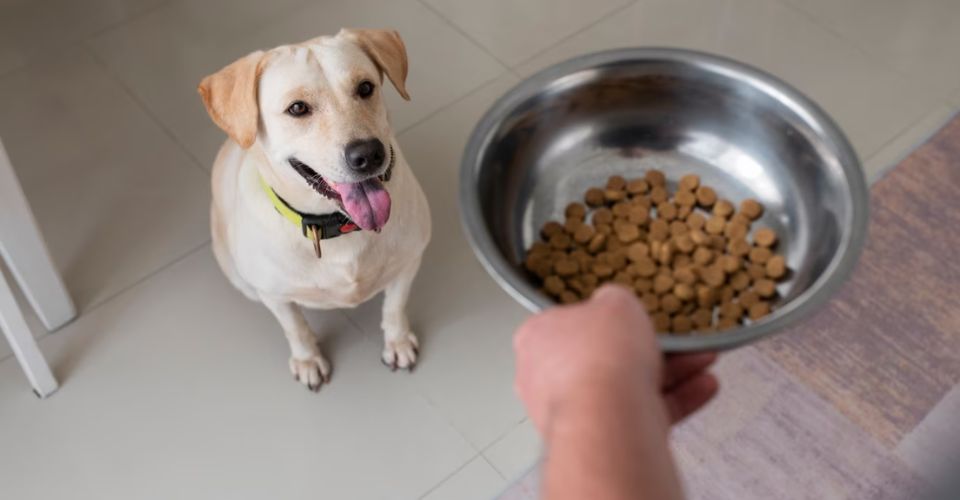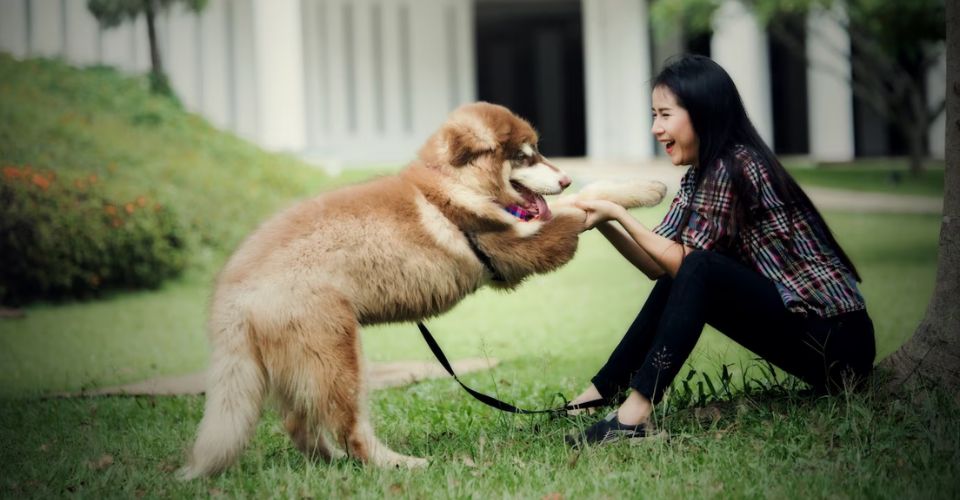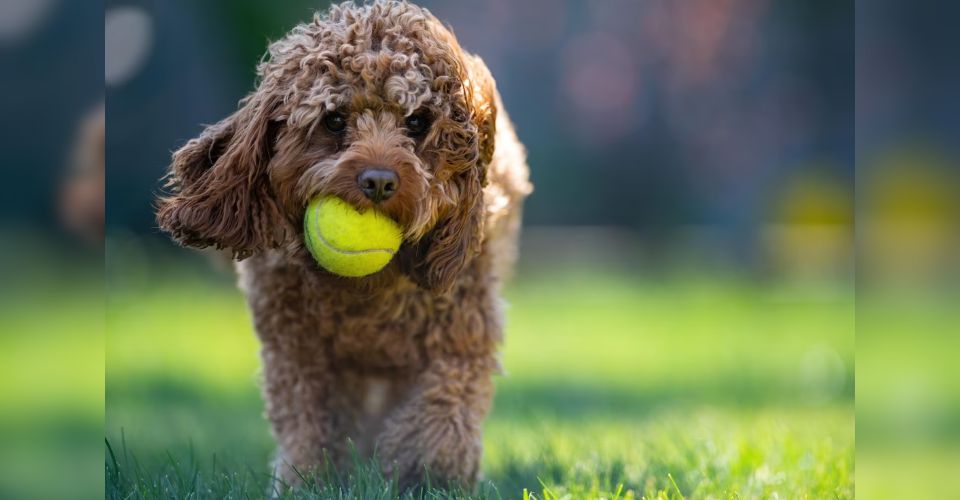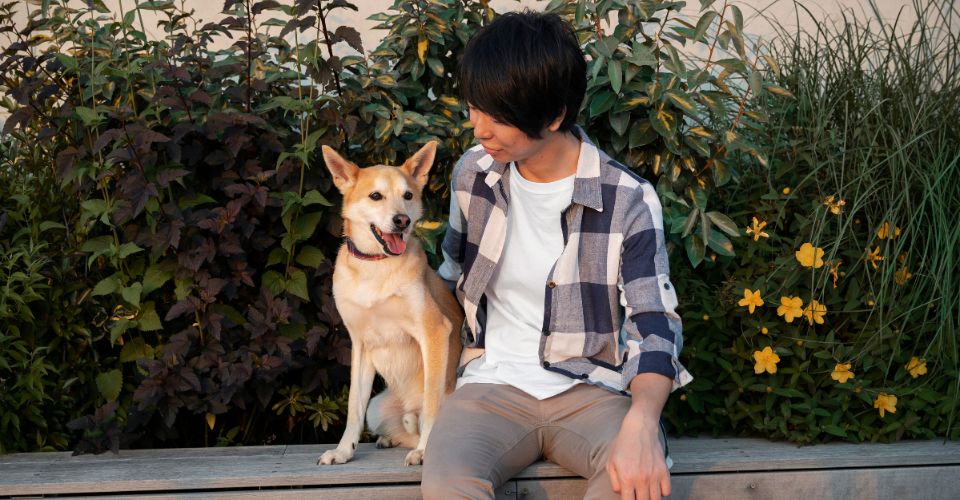Urine accidents are no joke – the pet owners who face them know how bad it feels. Urine accidents happen once in a while, and as responsible dog owners, we ought to deal with them without complaining.
But it gets really frustrating when the dog develops a habit of peeing in the house. And if you happen to have hardwood floors, dog peeing in the house would be your worst nightmare as it is really hard to get the dog pee smell out of the hardwood floors.
But dogs are intelligent creatures, and by applying some techniques, you can stop a dog from peeing in the house.
How to Stop a Dog From Peeing in the House?
Knowing why your dog is peeing in your home is the key to stopping it.
Here are the solutions for all those causes:
1. Clean the Mess
Dogs are more likely to come back to the spot they peed on previously. So, if you don’t want your dog to return and relieve himself in the same spot again, you must clean it quickly and effectively. There must be no pee smell after cleaning; dogs have a strong sense of smell and could catch even the tiniest of the smell and may pee there again.
This is where enzymatic cleaners kick in. Unlike typical household cleaners, they break down the odor thoroughly by killing the bacteria. Apply the cleaner where the mess has just occurred, let it soak and dry, and wipe it off with a paper towel.
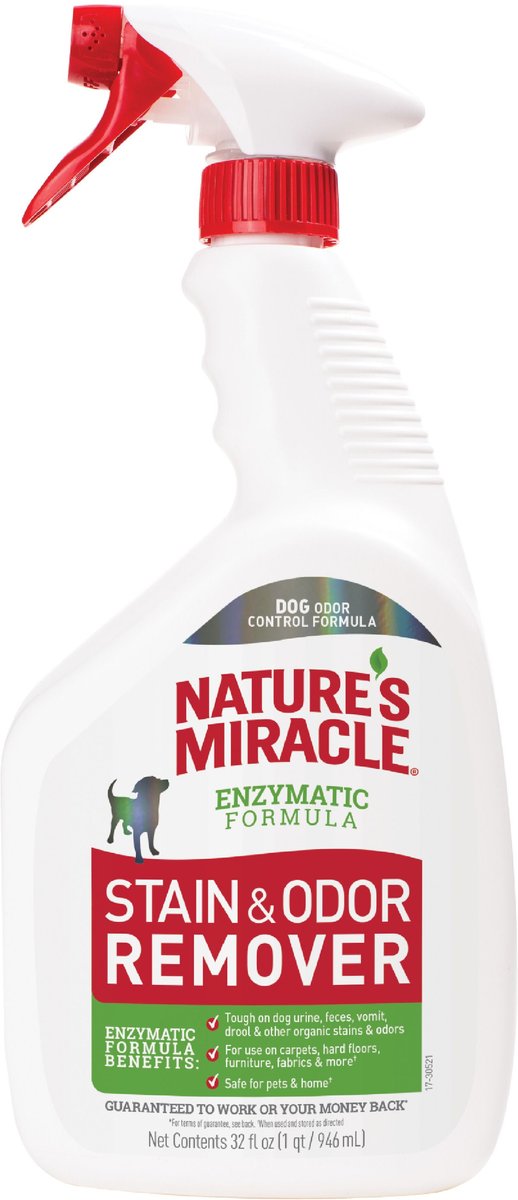
|
has enzymes that target stain spots, removing the odor of not just the urine but of stool, vomit, and drooling also. It also contains a citrus scent. |
2. Train Your Pooch
It is the most reliable technique to help your dog pee only in a specific area. There are several tricks to do that, however, note that it might be a bit different for both male and female dogs.
One of the most effective ways to do so is to train your dog to ‘let it go on command.’ Just leash your pooch and take him to the desired place. Say the cue word, and he should start peeing. All you need to do is to be patient and wait until the job is done.
Afterward, offer him a reward. You can also use pee posts to mark such areas for the future.

|
is infused with non-toxic pheromones that encourage a dog to eliminate at a designated area. It is easy to install and simple yet effective. |
3. Watch Your Dog’s Schedule
It is a simple yet effective plan. Observe your pooch. Note when he likes to eat, go exercise, and what time he usually goes to relieve himself. Based on that, you can take your dog out for a walk or to the desired place where you want him to pee.
But do not let him urinate on your lawn or someone else’s, as dog pee can kill the grass.
4. Remove Stress
Stresses of any kind can cause incontinence in dogs, be it physical such as over-exercising, or mental such as anxiety and fear. When the bladder is saturated, even slight pressure can cause the proverbial ‘floodgates to open.’
For instance, if a dog is susceptible to separation anxiety and you leave him alone for a long period, you will be coming back to a messy home. So, you should not leave your dog for long hours, and if it is necessary, you can hire a dog sitter or put your dog in his crate after having him pee outside and let a family member take care of him.
Before putting your dog in a crate, you should know how long your dog can hold its pee. If you leave him alone for longer than his ability to hold pee, he might make a mess.

|
Can be added to your dog’s diet to remove behavioral problems related to stress and tension. It increases serotonin in the brain, leading to relaxation. |
5. Watch Your Dog
Do it until you are sure your dog will not pee anywhere in your home. This will help you monitor the ‘accidents’ as they happen. Seeing a dog urinating in your home can help you take immediate action. Imagine your dog has peed on the wooden floor.
The effects would linger on, and you would need to use dog urine removers on your wooden floor at that point, costing you money and time. On the other hand, if you are watchful, you can bring the situation under control before it is too late.
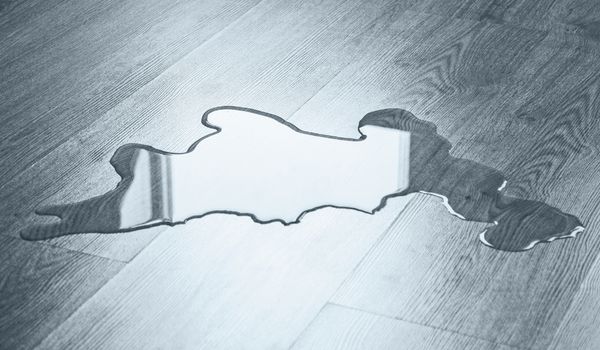
Even when you are not home, try to cage your pooch for some time. Letting him wander freely can cause you trouble. Or, if your dog is unhappy with this idea and you are not an apartment dweller, consider restricting him to an open area or a room.
6. Manage Young and Old Dogs
Remember, pups and senior dogs are more likely to have accidents; the pups may do it because of the lack of training, while the seniors can experience incontinence, especially if it is a female.
Again, you need to be very attentive and careful if you have dogs in these age groups – leaving them unsupervised can increase the chances of urinating everywhere. If you are housebreaking your puppy, you can use peed pads – they can absorb a lot of urine and control the odor.
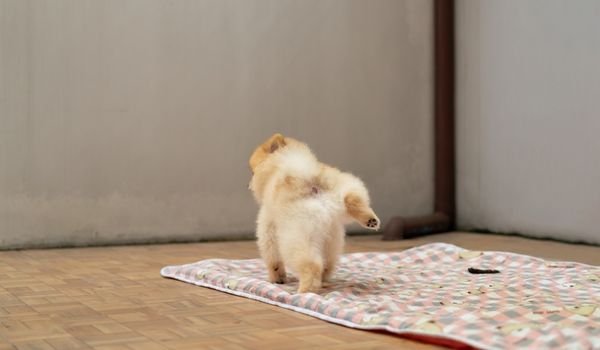
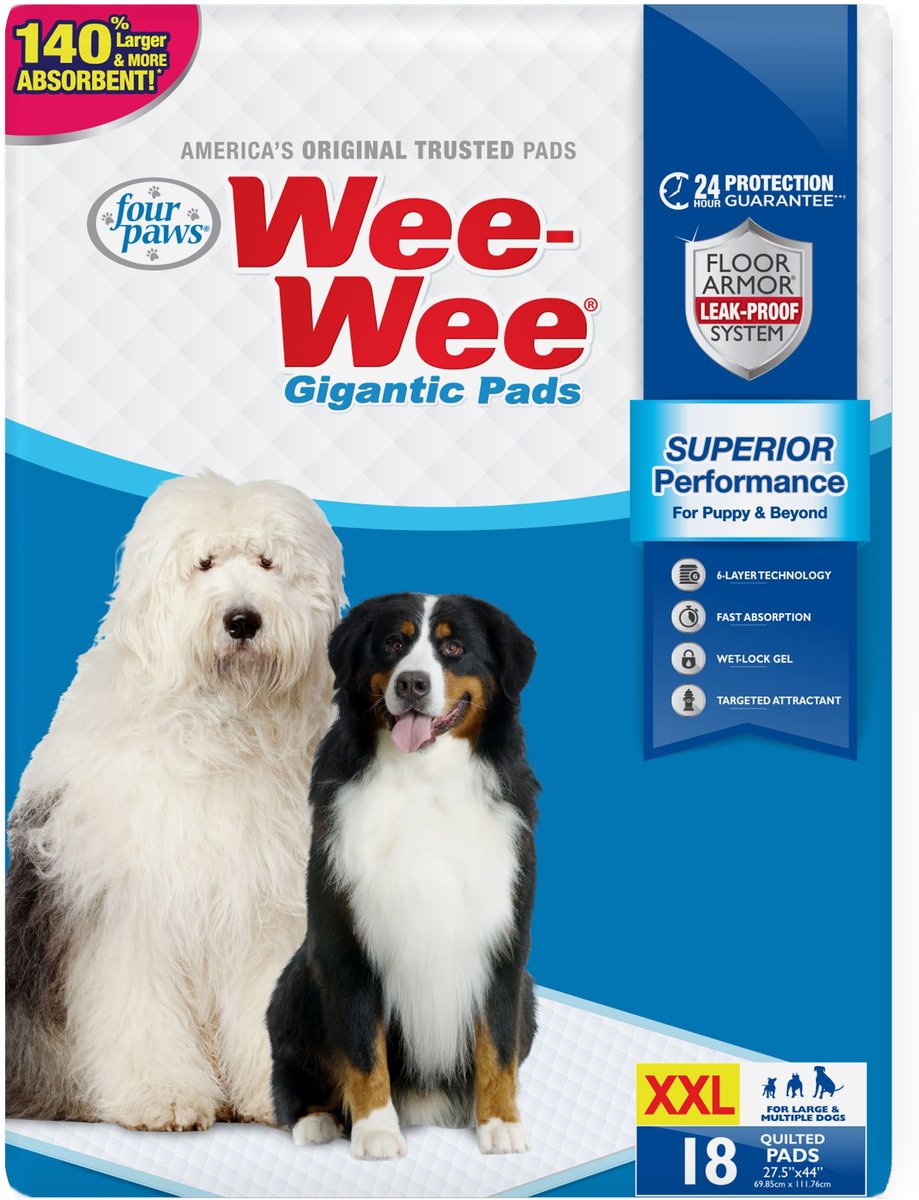
|
These Wee-Wee pee pads are gigantic, super absorbent, and 100% leak-proof. Besides soaking up all the pee, they also control the odor of the dog’s urine. |
7. Keep Water Intake in Check
Often, dogs end up peeing in unwanted areas simply because there is plenty of urine in them – they drink a lot! But before you restrict your pooch’s water intake, know that a dog needs up to two cups of water per 10 pounds of body weight. If your dog is drinking more than that, you can safely reduce the quantity – consult your vet before cutting the water intake, as you might risk dehydration in him if it is not done carefully.
Before you cut on your dog’s water intake, know that high-energy and athletic dogs need more water than lazy dog breeds.
8. Employ Positive Reinforcements
While you can train your dog not to pee in the house without treats, the use of positive reinforcements will encourage your pooch to repeat his act, which earned him treats. While delicious treats top the list of positive reinforcements, you can reward your dog for desired behavior with belly rubs, hugs, toys, your attention, etc.
9. Spay or Neuter
Dogs, especially males, are notorious for urine marking their territories. If that is the reason why your dog is spraying his pee shots everywhere in your home, you can consider neutering your dog. Dogs who have not been neutered are more likely to pursue territory marking, while those who have been neutered will considerably reduce this behavior.
10. Get a Pro’s Help
You need to eliminate the possibility of any health condition. That is why seeking a professional’s help becomes vital. As per some facts, several medical conditions may trigger incontinence in your pooch that can eventually lead to them peeing everywhere in the house and at any time. These include:
- Diabetes
- Bladder infection
- Kidney and liver issues
- Parasites
- Unhealthy prostate
Remember, though some of these diseases can be diagnosed by looking at simple signs such as dark urine color, the vet can tell you what the real problem is.
Conclusion: How to Stop a Dog From Peeing in the House?
Once you have identified why your dog is peeing in the house, you will have to address the cause. To stop your dog from peeing in the house, you might have to re-train him, clean the pee as soon as possible, take more potty breaks, remove potential stressors, and rule out medical conditions. Having your dog peeing in the house could be frustrating, but you should never punish or even yell at your dog – he is not doing it out of spite.

